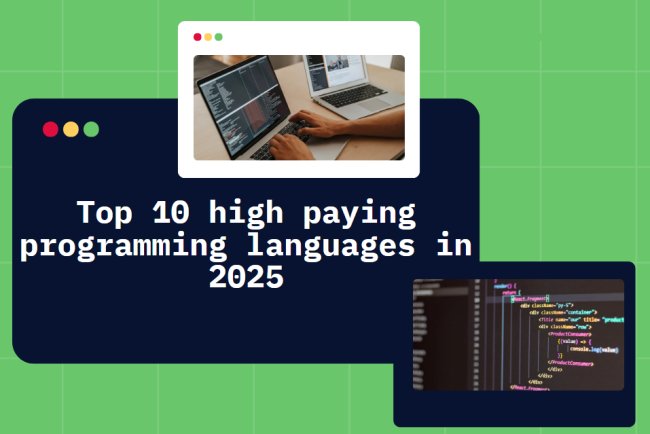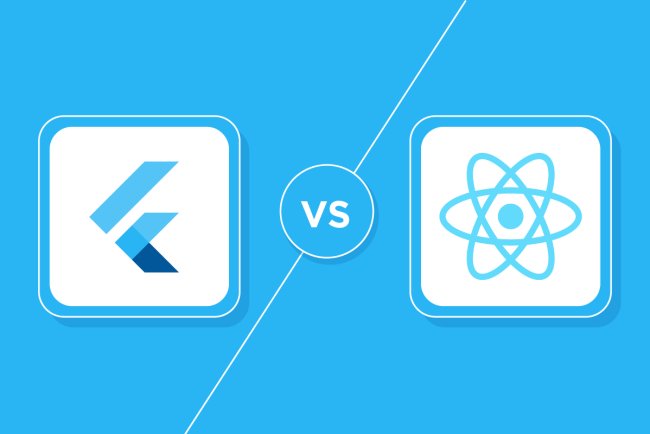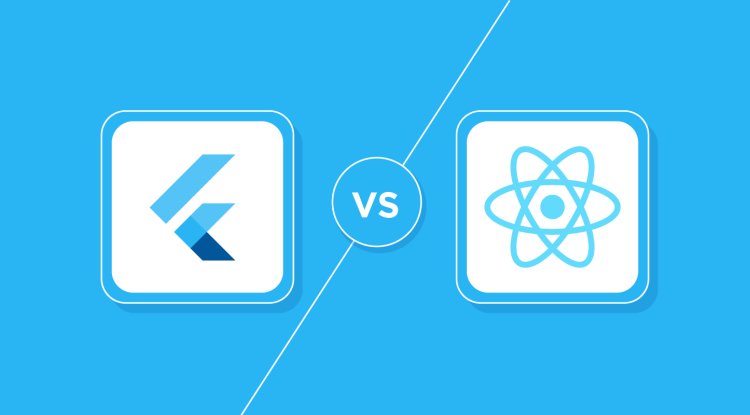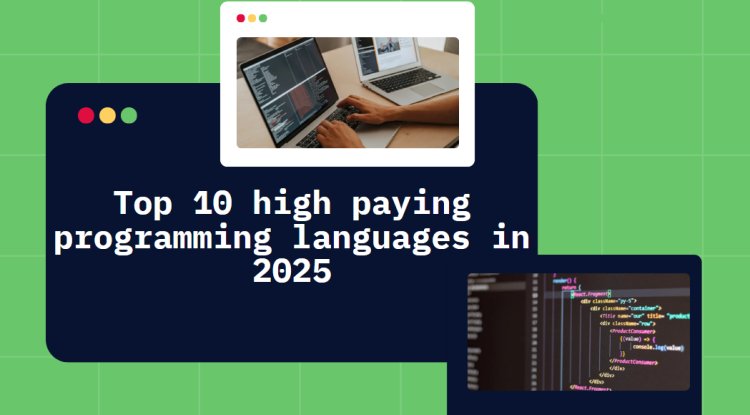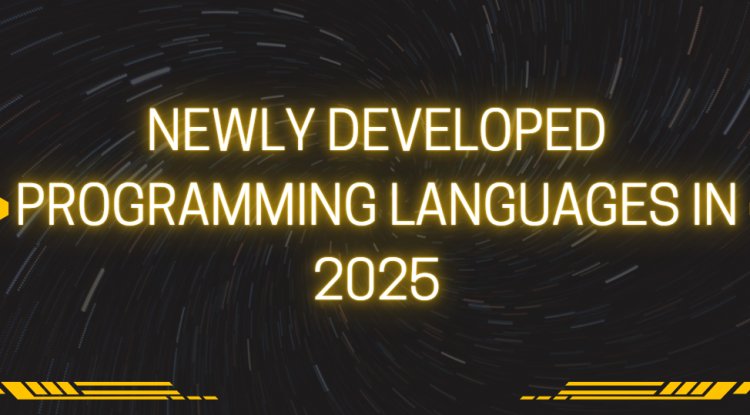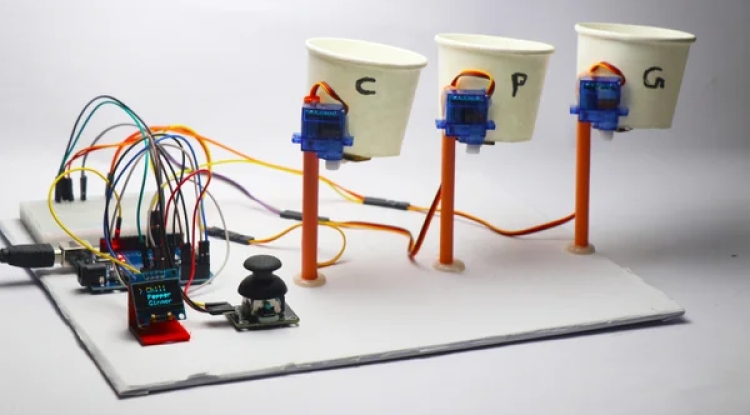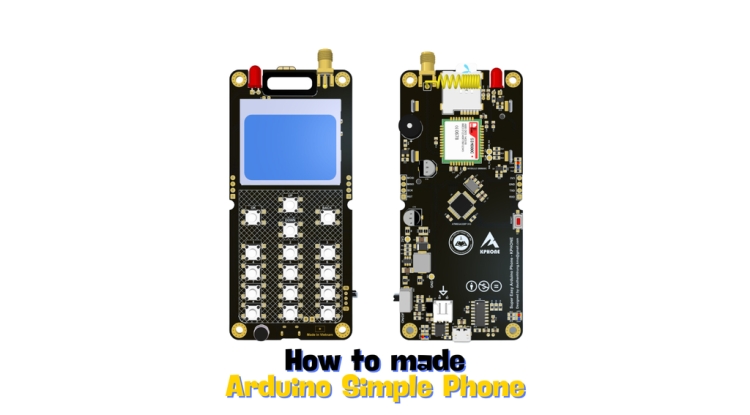Newly Developed Programming Languages in 2025
The year 2025 has witnessed a surge of activity at the convergence of programming-language research, domain-specific engineering, and the practical demands posed by AI, quantum computing, and WebAssembly. This essay reviews several significant languages and language projects that either emerged or achieved critical milestones in 2025 — Pel, Linguine, Hexcute, Qutes, and MoonBit — places them within broader technical trends, evaluates their design objectives and trade-offs, and contemplates the probable short- and medium-term effects on software development and research. Each language is analyzed for its motivation, fundamental abstractions, implementation approach, and potential pathways for adoption.
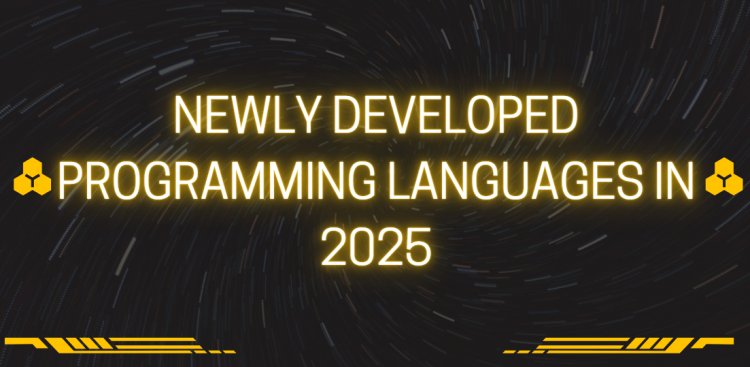
New Programming Languages of 2025 — an in‑depth essay
Abstract. The year 2025 has witnessed a surge of activity at the convergence of programming-language research, domain-specific engineering, and the practical demands posed by AI, quantum computing, and WebAssembly. This essay reviews several significant languages and language projects that either emerged or achieved critical milestones in 2025 — Pel, Linguine, Hexcute, Qutes, and MoonBit — places them within broader technical trends, evaluates their design objectives and trade-offs, and contemplates the probable short- and medium-term effects on software development and research. Each language is analyzed for its motivation, fundamental abstractions, implementation approach, and potential pathways for adoption.
1. Introduction — why 2025 feels different
The innovation of programming languages follows a cyclical pattern: new languages generally emerge in response to changes in hardware, runtime platforms, developer expectations, or specific application domains. The early 2020s were characterized by languages that reinforced ecosystems (such as Rust and TypeScript) and by tools designed for machine learning and cloud computing (including Python ecosystems and WebAssembly). In 2025, a combination of converging factors generated new motivations for language design:
Agentic AI and LLM orchestration. Large language models (LLMs) have evolved beyond simple text generators; they are now being integrated into agentic systems, pipelines, and tools that necessitate coordination, control of capabilities, and safe execution patterns. Consequently, languages that enable developers to express orchestration semantics in a concise manner are increasingly valuable.
Natural‑language programming experiments. With the advancement of LLMs, the distinction between human language and programming code is being reevaluated: is it possible for a formally well-defined, compile-time analyzable subset of English to serve as a practical programming interface? The year 2025 witnessed significant research efforts aimed at this objective.
Domain‑specific efficiency demands. The rise of deep learning and heterogeneous accelerators (such as GPUs and TPUs) necessitates programming models that reveal hardware abstractions while allowing compilers to automate laborious optimization processes. Tile-centric methodologies promise substantial improvements in mixed-precision and operator performance.
Hybrid classical–quantum workflows. As quantum hardware continues to develop, higher-level languages that integrate quantum and classical logic can facilitate the implementation of hybrid algorithms and practical experiments.
WebAssembly and modern toolchains. The expanding capabilities of WebAssembly (Wasm), including garbage collection and a component model, position it as a premier compilation target; languages that are designed with Wasm as a primary backend can yield compact, efficient artifacts and enable seamless cloud and edge deployment.
The languages that attracted attention in 2025 address one or more of these challenges. The remainder of this essay will explore five exemplary cases and then distill practical insights.
2. Pel — a language for orchestrating AI agents
2.1 Motivation and Context
Pel was specifically developed to tackle the challenges associated with orchestrating LLM-driven agents and multi-agent workflows. Conventional methods — such as improvised orchestration code, tool-calling APIs, or domain-specific languages built on general-purpose programming languages — have found it difficult to achieve a balance of expressiveness, safety, and compactness for workflows centered around models. The creators of Pel advocate for a compact, homoiconic language that incorporates capability constraints and agentic control flow directly within its syntax, thus facilitating both human authorship and LLM generation.
2.2 Core Ideas and Abstractions
Homoiconicity and Minimal Grammar. By adopting a homoiconic structure (where code is represented as first-class data structures), Pel aspires to enable succinct macro-like transformations and ensure that models can reliably generate or modify code.
Natural-Language Conditions. Pel integrates constructs that allow certain conditions to be assessed by an LLM in a controlled manner — striking a balance between natural expressiveness and verifiability.
Capability Control via Syntax. Rather than depending exclusively on runtime sandboxing, Pel incorporates capability boundaries within its grammar and constructs, thereby minimizing the potential for misuse.
REPeL (REPL with Restarts and Helpers). An advanced REPL that includes restart-style error recovery and “helper agents” capable of suggesting corrections, drawing inspiration from Common Lisp restarts and automated repair processes.
2.3 Implementation and Trade-offs
Pel’s homoiconic architecture is conducive to small interpreters or minimal compilers; its static dependency analysis allows for the automatic parallelization of independent agent tasks. This design is particularly well-suited for multi-agent pipelines where parallelism and dependency resolution are critical. The trade-offs involve the potential risk of overfitting the syntax to the current capabilities of models and the necessity for robust semantics concerning LLM-evaluated conditions — especially in scenarios where reproducibility is essential.
2.4 Potential impact
If Pel or Pel‑like languages see adoption, we might expect clearer patterns for “agent orchestration modules” (libraries, tooling, debugging) and a rise in runtime services optimized for Pel’s execution model (e.g., capability‑aware sandboxes and cost‑aware execution planners). Pel’s emphasis on syntax‑level capability control could influence how safer model‑tooling is specified more broadly.
3. Linguine — controlled English as a programming surface
3.1 Summary of the Concept
Linguine represents a formally defined experiment aimed at transforming a controlled subset of English into a secure, statically analyzable programming language. It features statically resolved anaphoric constructs (such as pronoun variables like 'it' or 'them') that are deterministically mapped at compile time through referent-tracking analyses built upon a Hindley–Milner style type system. The primary assertion is that it is possible to achieve a readable, nearly natural syntax without compromising formal semantics or tool usability.
3.2 Key Design Features
Pronoun Variables. Anaphora (pronouns) are treated as first-class entities: the compiler resolves them via static analysis, eliminating the typical ambiguities found in natural language.
Type Inference and Formal Semantics. The semantics and type rules of Linguine are explicitly defined, allowing the language to be compiled and subjected to static checks.
Compiler Pipeline. The language is designed to target conventional backends (for instance, it compiles to Python), facilitating practical interoperability while also exploring a more user-friendly frontend.
3.3 Opportunities and Challenges
Linguine aims to enhance readability and reduce entry barriers, which could be beneficial for education, programming by domain experts, or rapid prototyping. However, controlled natural language presents several challenges:
Boundary Management. What should be the extent of the "controlled subset"? An overly broad scope may introduce ambiguity, while a too narrow scope could diminish the advantage of naturalness.
Tooling Complexity. Accurately resolving anaphora at compile time necessitates robust contextual analyses, which can be quite complex in larger programs and interactive coding environments.
Cognitive Load. Although surface readability might improve, programmers still need to grasp the rules governing pronoun scoping and referent resolution.
Should Linguine's experiments prove successful on a larger scale, they could pave the way for new hybrid IDEs that permit natural language modifications supported by formal verification, or for domain-specific languages that enable subject matter experts to directly author logic.
4. Hexcute — tile‑based GPU programming for DL operators
4.1 Rationale
Deep learning tasks are increasingly requiring mixed-precision and custom operator implementations to gain performance and memory benefits on accelerators. Hexcute introduces a tile-based programming model that clearly reveals shared memory and register abstractions while automating the synthesis of layout and task mapping to lessen the burden on programmers. This method aims for both expressiveness and high performance.
4.2 Technical contributions
Tile-based abstraction. Programmers conceptualize computations as tiles — units of computation and memory layout that align well with GPU hardware.
Automatic layout and task-mapping synthesis. An innovative type-inference method generates efficient layouts and task schedules, minimizing the need for manual adjustments.
Performance claims. Evaluations detailed in the Hexcute research demonstrate substantial speedups (1.7–11.28×) compared to existing DL compiler baselines for specific mixed-type operators, along with noticeable improvements in end-to-end applications.
4.3 Place in the stack and trade-offs
Hexcute operates between high-level tensor languages (such as auto diff frameworks and Triton-like DSLs) and low-level libraries (like CUTLASS). Its objective is to provide sufficient control for expressing fine-grained optimizations while automating mapping and layout. Trade-offs involve the learning curve associated with tile reasoning and the complexity of incorporating Hexcute into current ML toolchains, although the performance gains may warrant that investment for operator authors and compiler developers.
5. Qutes — a high‑level language for quantum‑classical workflows
5.1 Motivation
Hybrid quantum-classical algorithms necessitate a programming model that allows for the natural coexistence of classical orchestration, parameter updates, and quantum circuits. Qutes is developed to facilitate the creation of quantum programs by providing higher-level constructs and compiling them into established quantum frameworks (such as Qiskit), thereby simplifying execution on actual devices.
5.2 Design characteristics
High-level quantum abstractions. Qutes seeks to obscure low-level gate specifics whenever feasible, offering constructs that are more accessible to algorithm designers.
Seamless classical-quantum integration. Qutes emphasizes hybrid workflows, enabling classical control flow and parameter updates to be articulated within the same program as quantum kernels.
Backend compatibility. By converting to Qiskit or comparable toolchains, Qutes leverages existing device drivers and simulators while presenting a more streamlined interface for programmers.
5.3 Considerations
Qutes reduces obstacles to quantum algorithm experimentation and education. The primary limitation is that hardware constraints (such as noise, qubit count, and connectivity) remain essential; programming languages can only alleviate software friction, not eliminate physical restrictions. The successful adoption of Qutes will rely on its integration with tools (like simulators and visualizers) and whether the language effectively simplifies algorithm expression without obscuring critical hardware considerations.
6. MoonBit — a WebAssembly‑first language reaching beta
6.1 Positioning
MoonBit, which achieved public beta status in mid-2025, positions itself as a contemporary language and toolchain centered around WebAssembly as its main target. Its features are deliberately designed to mirror Rust in terms of ergonomics while incorporating garbage collection, pattern matching, and strong tools aimed at providing rapid feedback for developers. The initiative focuses on creating small, efficient Wasm artifacts and delivering a solid IDE experience.
6.2 Key attributes
Wasm primary backend. MoonBit leverages the expanding capabilities of Wasm (GC, string builtins, component model), facilitating cloud and edge deployment with compact binaries.
GC + modern ergonomics. In contrast to Rust’s manual memory management, MoonBit utilizes a garbage collected approach to enhance developer ergonomics while aiming for high performance through optimization and compilation techniques.
Fast tooling. The initiative emphasizes extremely rapid compile/test cycles and seamless IDE integration, reducing iteration times for developers working with Wasm.
6.3 Impact pathway
The success of MoonBit will depend on several practical factors: the maturity of its runtime and standard library, interoperability with existing Wasm ecosystems, and its capacity to provide significant benefits (smaller artifacts, quicker developer loops) compared to established alternatives like Rust or AssemblyScript for Wasm targets. Should MoonBit thrive, it could boost Wasm adoption in microservice and edge environments where compact binaries and swift iteration are crucial.
7. Cross‑cutting themes and design trade‑offs
Across these 2025 languages several themes recur:
7.1 Domain specificity vs. generality
Hexcute and Qutes focus on addressing specific domain-related challenges (such as GPU operators and quantum algorithms), thereby sacrificing generality in favor of significant advantages in particular areas. Pel and Linguine explore innovative programming interfaces (including agent orchestration and controlled English), where domain-specific abstractions offer substantial utility. MoonBit aims to function as a general-purpose language that is optimized for a specific target (Wasm) and enhances the developer experience.
7.2 Human vs. machine friendliness
Linguine places a strong emphasis on human language, while Pel and MoonBit strive to find a balance between human readability and machine processability. The overarching trend involves experimenting with languages that enhance the roles of both humans and LLMs in the software development cycle.
7.3 Compilation targets and runtimes
Many programming languages emerging in 2025 adopt a pragmatic approach regarding backends: Qutes compiles to Qiskit, Linguine is designed for Python, and MoonBit is aimed at Wasm. This pragmatic approach minimizes barriers to adoption and takes advantage of existing ecosystems.
7.4 Safety and capability control
Pel’s syntax-level capability control represents an innovative approach to addressing safety issues that arise when LLMs produce side effects. This method stands in contrast to traditional runtime sandboxing and may have a significant impact if agentic systems become more widespread.
8. Adoption pathways: what will determine success?
For emerging programming languages, achieving success relies on a combination of technical excellence and ecosystem elements:
Tools and documentation. Languages that come equipped with strong command-line interfaces, debuggers, package management systems, and comprehensive tutorials possess a significant advantage.
Interoperability. Languages that can work seamlessly with leading runtimes or compile to widely-used targets (such as Python, Wasm, Qiskit) minimize barriers to adoption.
Distinct winning use case. Domain-specific languages thrive when they address a specific developer challenge with quantifiable advantages (such as increased speed, simplification, or enhanced safety).
Community and governance. Open governance structures, reproducible benchmarks, and active community involvement are essential for maintaining momentum.
Maturity of runtime and security framework. Languages intended for agentic workflows must incorporate transparent and auditable security and cost models to be considered viable in enterprise environments.
9. Risks, limitations, and ethical considerations
The introduction of new languages — especially those that blur the line between natural language and executable code, or that manage autonomous agents — introduces new risks:
Ambiguity and reproducibility. Languages that allow for LLM-driven evaluation (such as Pel’s natural-language conditions and Linguine’s readable constructs) must be meticulously documented and tested for reproducibility. When execution relies on non-deterministic model outputs, achieving reproducibility and effective debugging becomes problematic.
Security and capabilities. Languages designed for agent orchestration require well-defined mechanisms to restrict the actions of code or agents; otherwise, they may become potential tools for misuse. Pel’s syntax-level capability control presents an intriguing mitigation approach, but it will necessitate thorough evaluation.
Opportunistic fragmentation. Should each domain develop its own domain-specific language (DSL), the ecosystem risks fragmentation, leading to higher integration costs. Successful practical languages often thrive by connecting with existing tools and standards.
Over-promising naturalness. Controlled natural languages (like Linguine) can be beneficial in certain contexts (such as education and subject matter expert interfaces), yet they cannot substitute for the clarity and precision that developers depend on for intricate systems.
10. Future directions and research opportunities
The 2025 crop of languages indicates several research agendas that merit attention:
Formally verified agent languages. The integration of formal semantics with agent orchestration primitives aims to facilitate verification and ensure provable safety properties.
Hybrid compilation pipelines. These are robust systems that take high-level natural descriptions, compile them into efficient backends (such as Wasm, GPU kernels, and quantum circuits), while maintaining provable invariants.
Tooling for linguistically friendly code. Integrated Development Environments (IDEs) that assist users in transitioning between natural expressions and formal code, offering traceability of referents and type information (particularly for languages like Linguine).
Autotuning and synthesis for accelerator code. Ongoing efforts in layout synthesis and mapping (in the style of Hexcute) aim to minimize the need for human tuning of custom operators.
Quantum-classical co-design. Languages such as Qutes suggest a closer integration between quantum algorithms and classical orchestration; research focused on predictable performance and noise-aware compilation is essential.
11. Conclusion — measured optimism
The languages that emerged in 2025 are not necessarily ready to replace existing ones in a competitive manner. Instead, they represent exploratory and purpose-driven initiatives aimed at filling specific, modern gaps: agent orchestration and secure LLM-driven systems (Pel), user-friendly yet formally defined programming (Linguine), hardware-aware operator optimization (Hexcute), accessible quantum programming (Qutes), and Wasm-first contemporary tools (MoonBit). Each of these contributes significant design experiments and technical artifacts from which the broader community can benefit. If these initiatives are thoughtfully integrated with current ecosystems, and if their claims regarding safety, tooling, and performance withstand rigorous examination, they could significantly impact language design during the latter part of the 2020s.
What's Your Reaction?








